Turn back time and experience...
The Mediterranean, a magical region burgeoning with history and overflowing with monuments and facades, traces of the founding eras of our Azur cities. The Var region is proud of its past and offers superb visits from this cultural and architectural perspective. Experiencing Southern France also means exploring its back streets and brickwork, and imagining the lives of the people that built this stunning region. You will find castles, fortresses, churches, museums, arenas and pedestrian streets. And to really feel the soul between these walls, a tour, with or without a guide, is a must. Time will stand still…
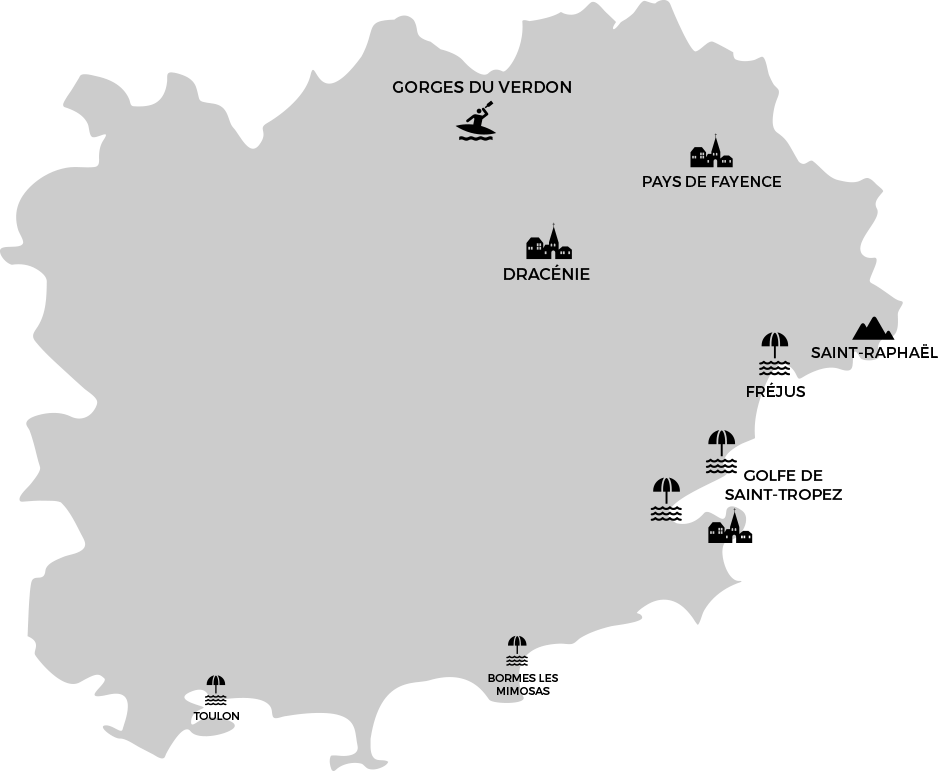
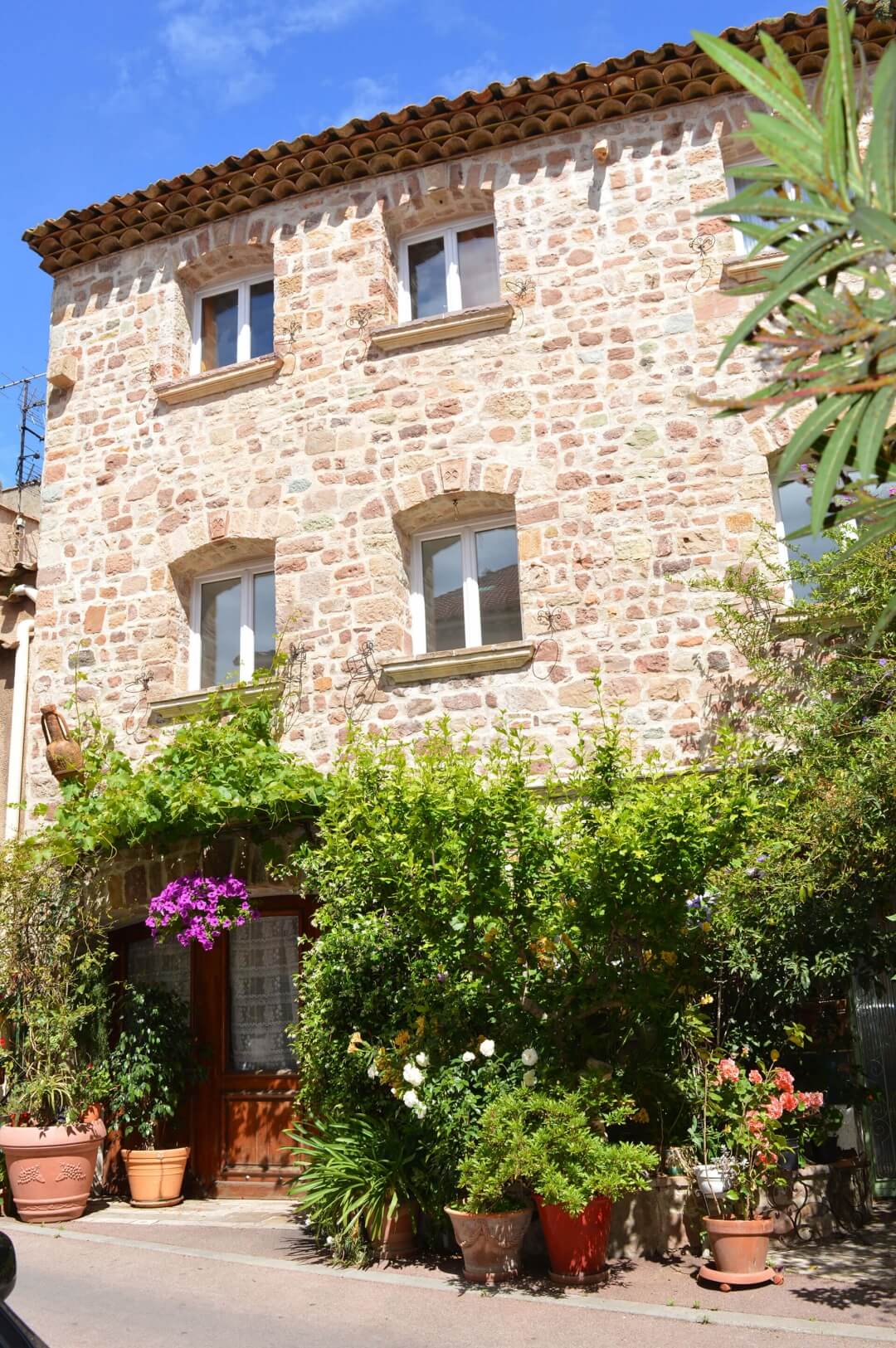
FréjusA town of art and history
Fréjus, originally known as Forum Julii, is an ancient Roman town founded in 49 BC, and is part of the Ville et Pays d’Art et d’Histoire network (Towns and Lands of Art and History). An economic, cultural and touristic hub, the East Var boasts the largest concentration of ancient ruins after Arles. The town’s history will be literally palpible on a visit to Fréjus. Especially as many traces remain of the civilizations that have lived there, including the town centre, which is the result of a mixture of rich and varied cultures. With a magnificent cathedral listed as a historic monument, authentic fountains and small colourful houses, Fréjus has a unique historic centre, a testament to its rich heritage. Come and explore the colourful, narrow streets and discover its heritage. There is no better way to soak up the town’s history than to visit it! With or without a guide.
Throughout the year, Fréjus offers tours of its monuments, museums and exhibitions, from the five museums and monuments managed by the town council to the regional cultural institutes, such as the local history museum, the archaeology museum, the ampitheatre, the Philippe Léotard Roman theatre and Notre-Dame-de-Jérusalem chapel, also known as the Cocteau chapel. Other sites and museums to visit include the cloister of Fréjus Cathedral, the Troupes de Marine Museum, the Memorial to the Indochina War and Villa Aurélienne.
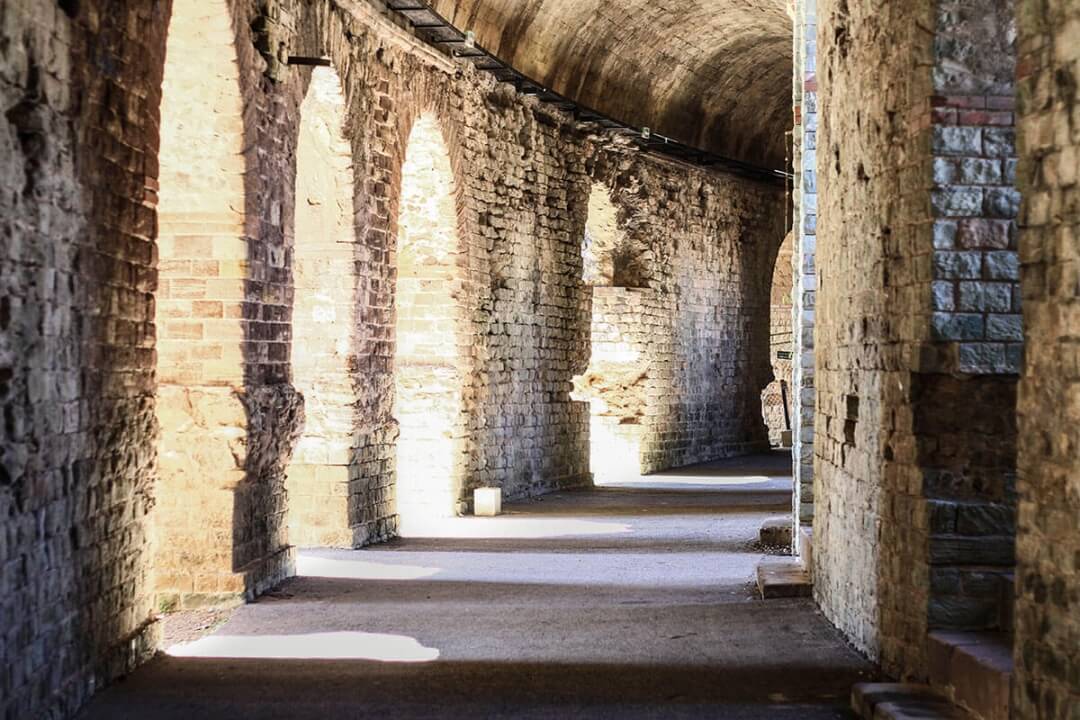
Must-seeThe Arenas of Fréjus
Fréjus’s history dates back to Ancient History, which has led it to inherit some very beautiful monuments, like its amphitheater, which is one of the largest in Gaul. The Fréjus amphitheatre, or Fréjus Arena, was built in the 1st century in the town of Forum Julii and most likely hosted gladiator fights and wild animal hunts. Walking around the ruins of this monument, it is easy to imagine the moments experienced in days gone by. Today the amphitheatre is brought back to life very summer with the concerts, dances and shows that form part of a rich and diverse programme.
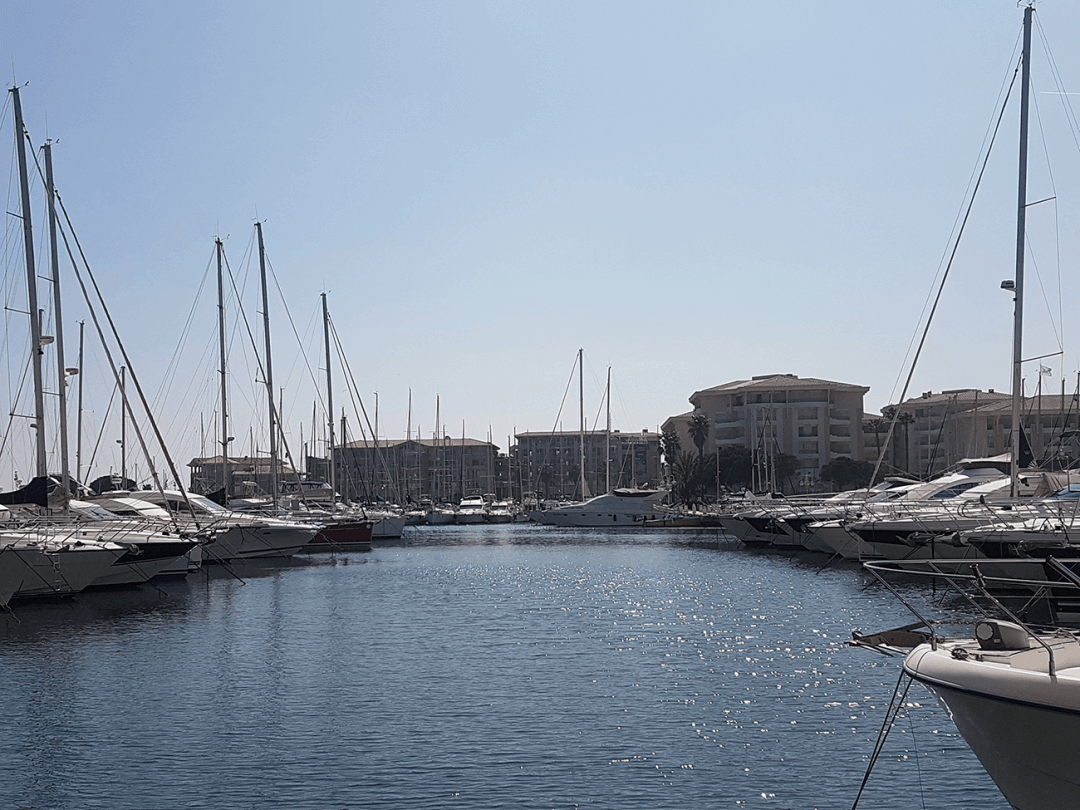
Fréjus PortA magical location!
In Ancient History, Forum Julii was home to a major port known for its military, commercial and harbour activities. It was located just next to the Orée Gate, the Saint Antoine Mound and the Augustus Lantern. In 1989, Port Fréjus was created. It stretched to the gates of the historic town, enabling the sea to meet the land and thus reconnect with its past.
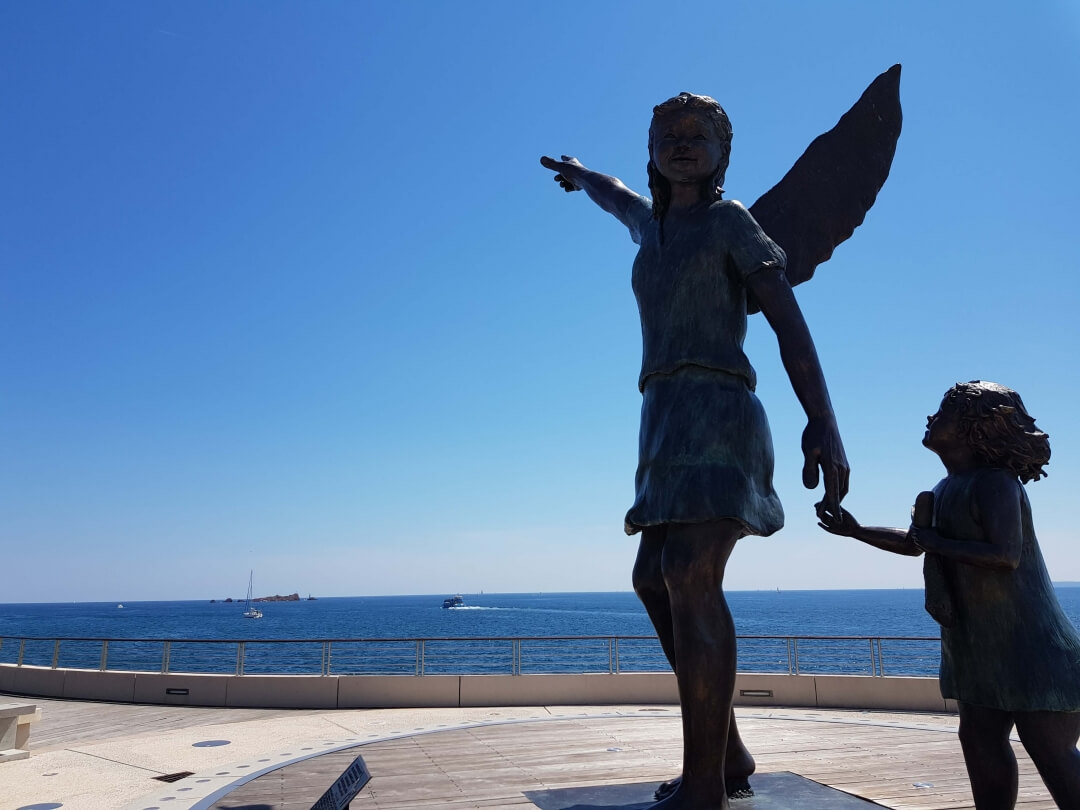
Saint RaphaëlAuthentic elegance!
Saint Raphaël, a much-loved seaside resort on the Mediterranean coast boasts a very rich history dating back to the Roman Empire, when it was already a popular seaside resort! “Epulias” (as it was known then) was home to the summer residences of the richest Roman citizens. Between the 16th and 18th century, Saint Raphaël acquired its coat of arms depicting Archangel Raphael with a young boy named Tobias, whose father he is said to have cured of blindness. The commune takes its name from this. You will be able to feel this past when walking through the paved streets of the historic town centre leading to San Rafeau Church, with its watchtower and Carolingian underground crypts. You can also explore the Museum of History, before learning about Félix Martin, an important local figure responsible for turning the small village into an upmarket seaside resort in the Belle Epoque. During this period, many important monuments were built, such as the Notre Dame de la Victoire Basilica (the most impressive example of the Byzantine style, represented primarily in its domes and the reproduction of a mosaic of Saint Sophia in Istanbul above the choir) and the baths promenade. Other architectural feats from a variety of periods can also be discovered, including beautiful villas in Belle Epoque, Anglo-Normand and oriental styles.
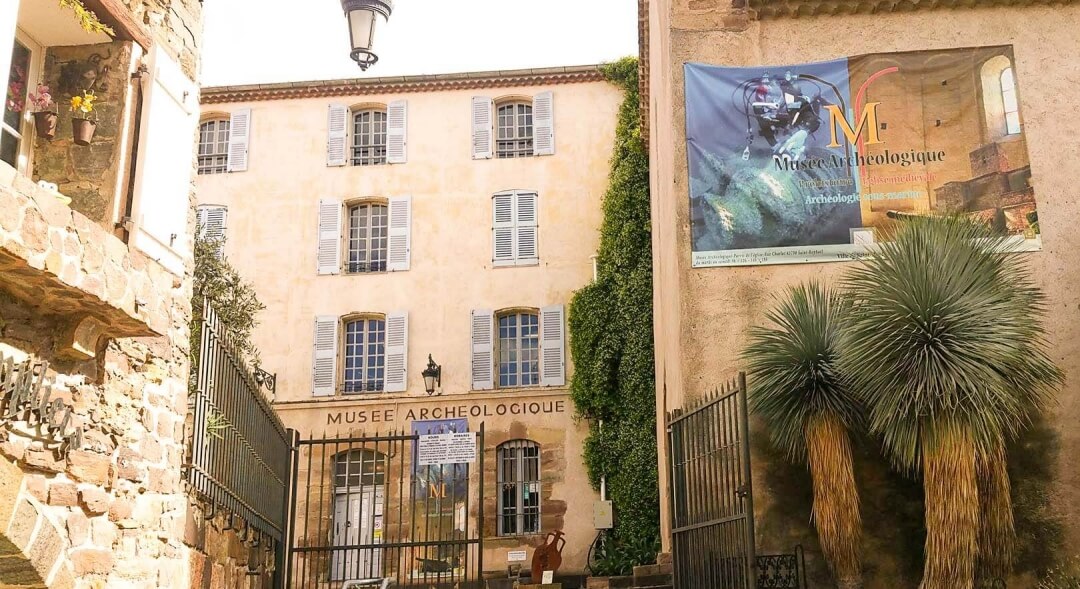
Places to visit in Saint Raphaël*
The Museum of Maritime Archaeology and Prehistory: located in the historic centre of Saint Raphaël, this museum was the presbytery of Sant Raféu Church in the 12th century. Traces of medieval architecture are also clearly recognizable in features such as ramparts, arrow slits and rafters.
San Rafeu Tower: in the 13th century, on the authority of the bishop of Fréjus, Saint Raphaël began construction of this tower, erected on the arm of the south transept of San Rafeu Church. This 25-metre high fortified tower offers a stunning 360° panorama of the peaks of the Estérel, the lakes of Villepey and the rocks of Roquebrune, as well as an uninterrupted view of the basilica and its Byzantine domes.



